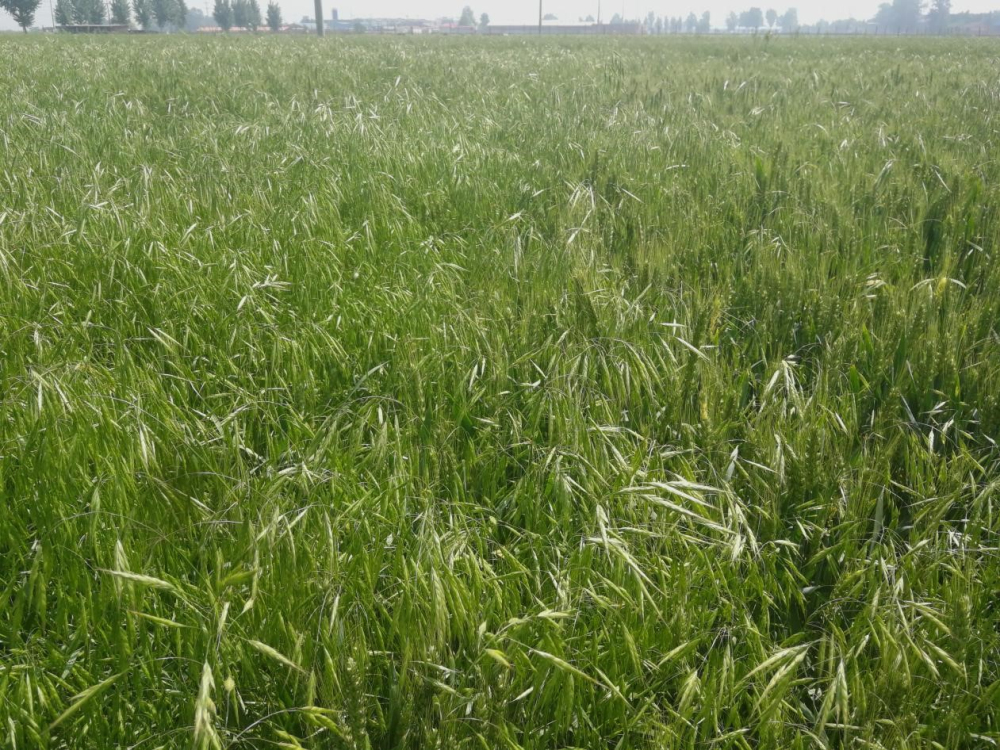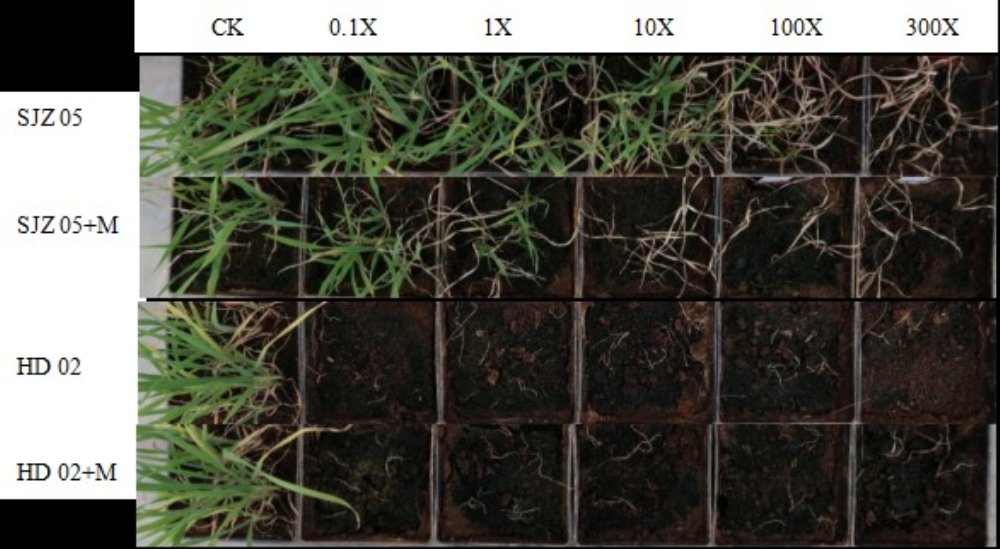Bromus japonicus is an annual or perennial plant of the Poaceae family, widely distributed in more than ten provinces in China, including Hebei, Henan, and Shandong. It is one of the main malignant weeds in wheat fields. In recent years, the control effect of acetyl lactate synthase (ALS) inhibitors such as fluazuron, methyldisulfuron, and dithiocarbamate on bromegrass has been decreasing year by year. Bromegrass has spread rapidly in wheat fields in Xinle and other areas, causing a significant reduction in wheat production. Some severely affected plots have experienced grassland fallow, leading to wheat near crop failure. Therefore, clarifying the mechanism of resistance formation of bromegrass to herbicides is of great significance for formulating scientific and reasonable weed control strategies and ensuring wheat production safety.

Recently, the Weed Research Laboratory of the Institute of Cereal and Oil Crops published a research paper titled "Diverse ALS mutations and cross and multiple resistance to ALS and EPSPS inhibitors in flucarbazone-sediment resistant Bromus japonicus population from Hebei Province, China" in the top journal of Agriculture and Forestry. This study indicates that the current resistant brome population in Hebei Province is mainly distributed in Shijiazhuang and Baoding areas, with an incidence rate of 34% and resistance multiples ranging from 43 to 1977. There are mutation types of ALS in the resistant population, such as Pro-197-Ser, - Thr, - Arg, and Asp-376-Glu. Among them, the Pro-197-Ser mutation type has the highest frequency of occurrence, accounting for 68%. The Pro-197-Thr resistant population exhibits cross resistance to imidacloprid and methyldisulfuron, and the resistance index to glyphosate reaches 2.2. Since 2023, the Weed Research Laboratory has published a series of studies on the mechanisms of herbicide resistance in malignant weeds such as Matang, Sophora annua, and Bromus in Pesticide Biochemistry and Physiology, providing support for the management of resistant weeds in major grain crop fields.

Paper publication address:
https://doi.org/10.1016/j.pestbp.2024.105794
(Source from www.hebnky.com)